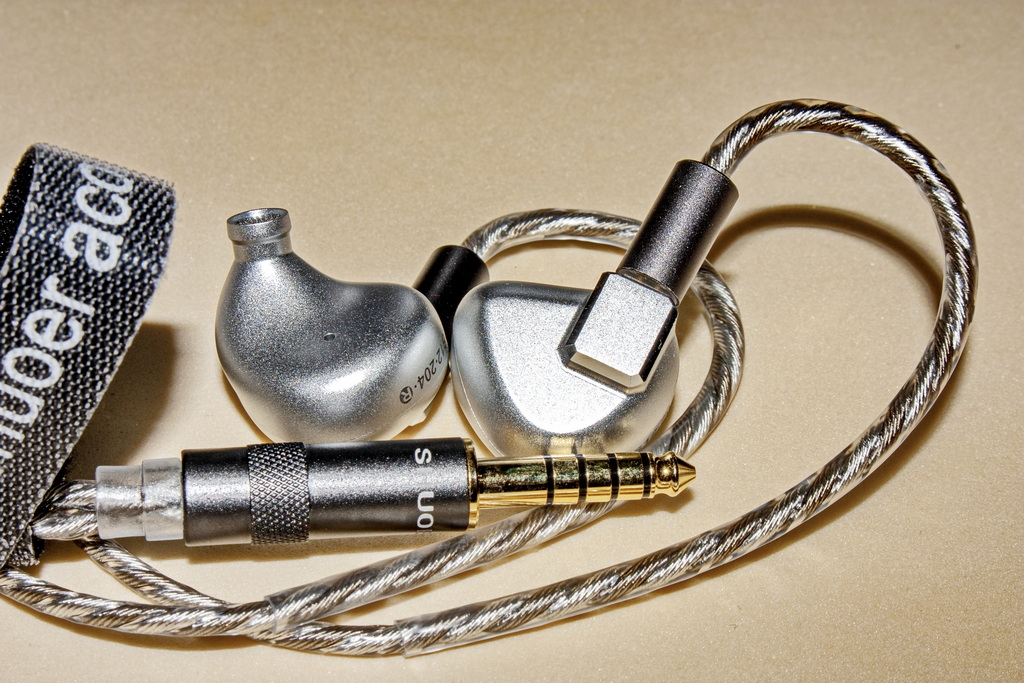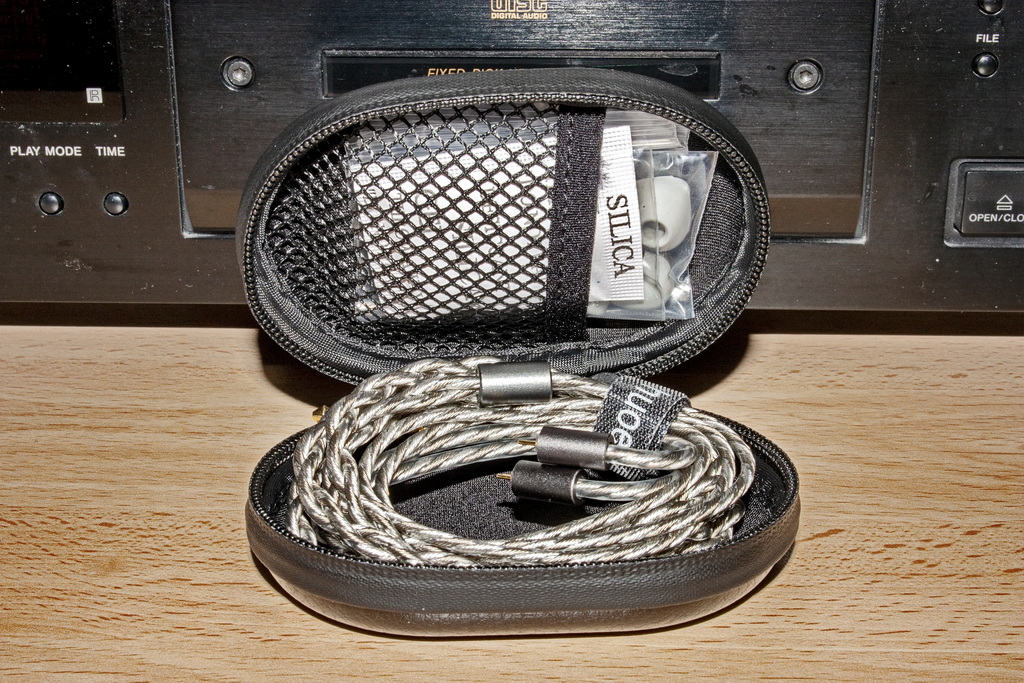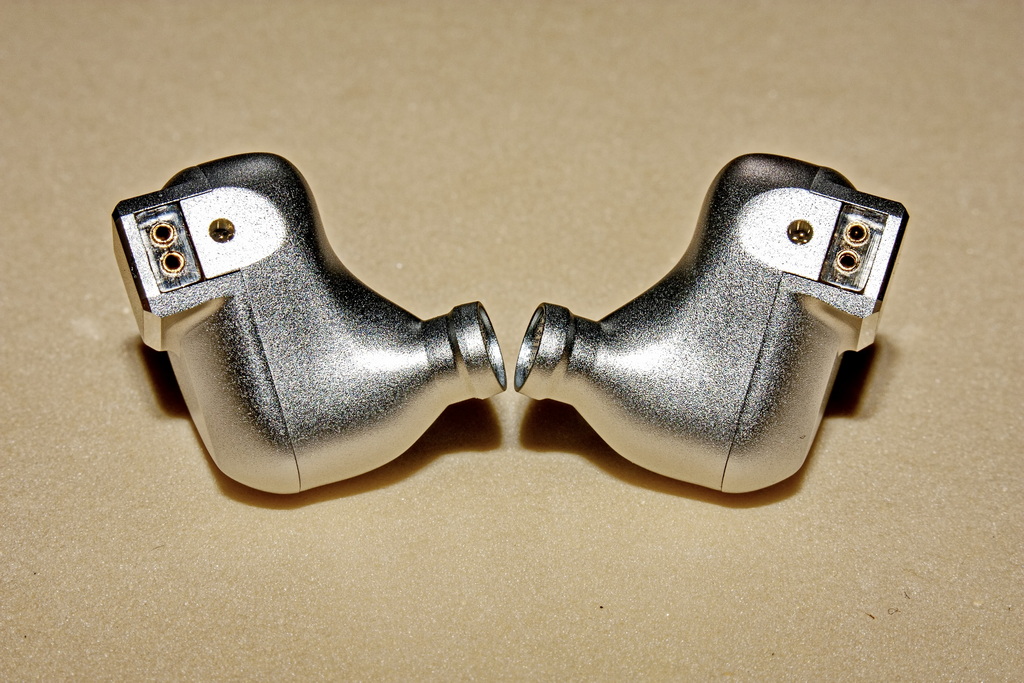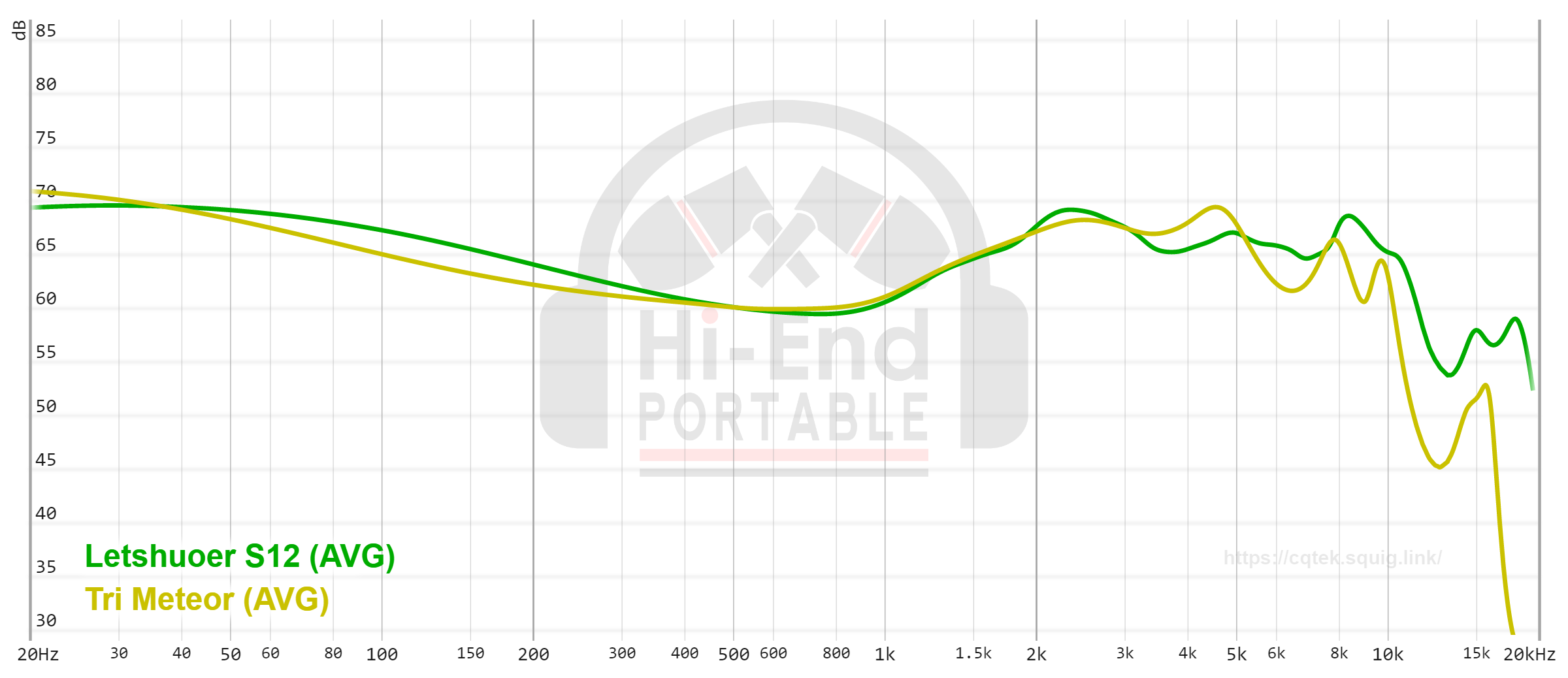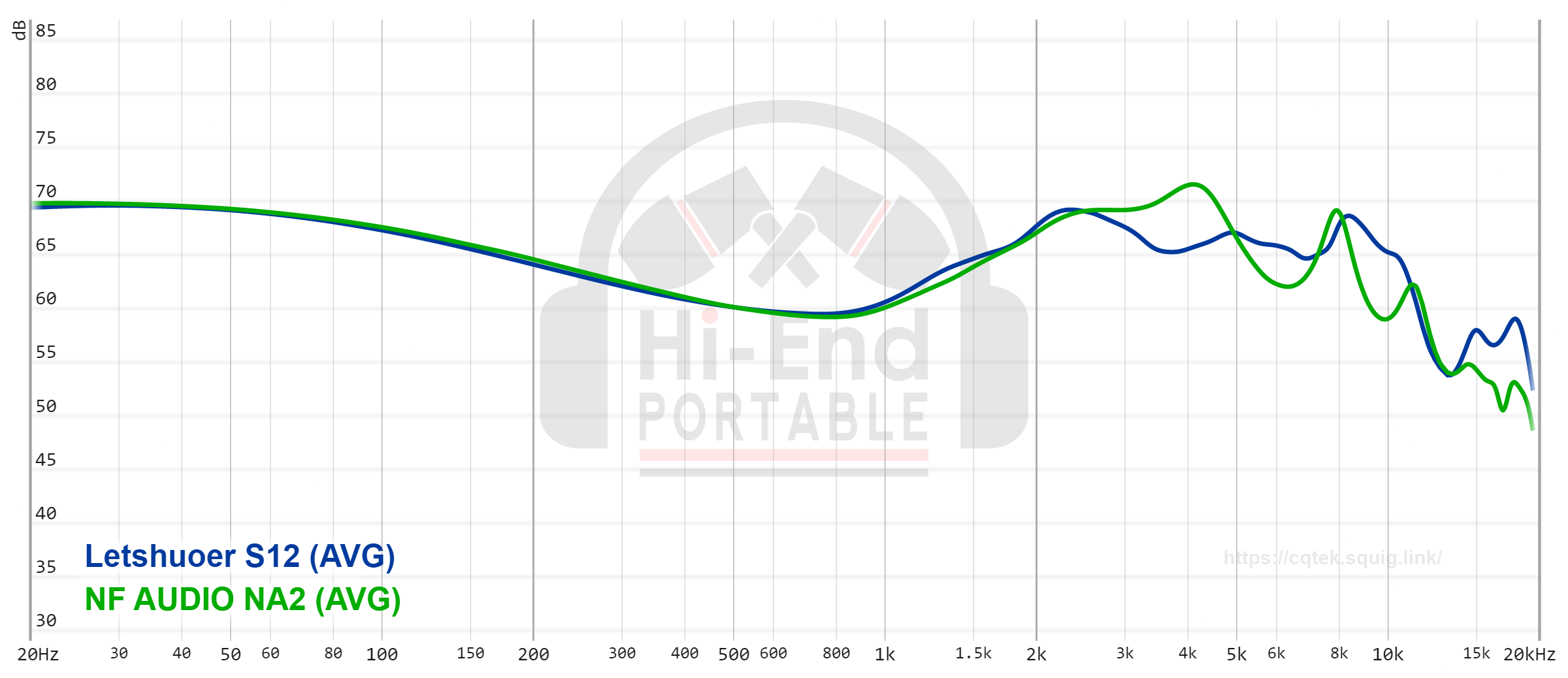In Search of the Found Response
Ratings
Pros
- Great frequency response, great tuning.
- One of the highest values for its price.
- Very good balance.
- Remarkable construction, fit, ergonomics.
- Good cable and case.
- Homogeneity of sound, all bands have good presence.
- Pleasant, smooth and pleasant sound, suitable for use at any time and for many hours.
Cons
- The cable does not extract the true potential of the IEMS.
- Bass is not very descriptive, the texture is soft. It does not compare to the physicality provided by a dynamic driver.
- Detail extraction is simply good, as are stage and separation.
- This is not an IEMS for critical listening, it is not analytical.
Purchase Link
https://letshuoer.net/products/s12-hifi-earphones-planar-iems
Link to the Store
Introduction
Formerly called Shuoer, the brand changed its name to Letshuoer not long ago. Known for having a few IEMS worth more than $200 under their belt, they started to get more buzz with their Tape Pro model and the collaboration with the famous audio reviewer, the HBB Kinda Lava model. But it is clear that the S12 is one of his most famous and best-selling models. As it could not be otherwise, it is an IEMS with a 14.8mm planar driver, customised by the brand itself. According to forums and users, there is controversy over whether or not it shares a driver with other similar models. In any case, the point here is not to look for three feet to the cat, in that sense, but to review a model that is among the favourites of many portable audio enthusiasts. In this review I will break down the virtues and shortcomings, if any, of the Letshuoer S12.
Specifications
- Driver Type: Planar 14.8mm
- Frequency Response: 20Hz-30kHz.
- Sensitivity: 102dB/mW
- Impedance: 16Ω
- Cable length: 1.2m
- Cable type: 128-wire silver-plated monocrystalline copper cable.
- Jack connector: choice of 3.5mm Single Ended or 4.4mm Balanced
- Capsule Connection Type: 2Pin 0.78mm
- IP Rating: IPX3
Packaging
The Letshuoer S12s come in an eminently white box with dimensions 152x104x67mm. On the front side, a large real image of both capsules can be seen. At the top left, the name of the brand. A little further down, a small description. On the right, the logo. The back side is terse, there is only lettering. Starting at the top, what looks like a slogan, in larger letters. Underneath are the specifications, in English and Chinese. From the middle to the bottom, there are the brand’s branding, more logos and the certifications that the product meets.
With the outer cardboard removed, the white box is revealed, with the brand name between the main face and one side. The manual is the first thing you can see, after lifting the lid. Underneath are the capsules encased in dense black foam rubber, located at the top. Underneath is a transparent plastic case with foam tips inside. Behind, there is another layer of foam with the rest of the accessories. In a nutshell:
- 2 S12 capsules.
- 1 cable.
- 1 black oval case with zip.
- Instruction manual.
- Brand card.
- Warranty card.
- Quality control card.
- 1 set of grey silicone tips, sizes SxMxL.
- 1 set of transparent silicone tips with black core, sizes SxMxL.
- 1 set of black foam tips, sizes SxMxL.
The presentation is fine, as are the components. The foam tips are nice, but the grey silicone tips are too soft for my taste. I do prefer the zippered case and the cable quality is superior. Although, it is true that I got the best sound from the S12s with a different silver-plated cable. Overall, remarkable.
Construction and Design
The nozzles grow from the centre of the inner face, although they are not very long. They have two tiers and are 4mm high. The first tier has a smaller diameter of 5.25mm. The second and outermost tier has a diameter of 5.85mm. The mouthpiece is protected by a perforated metal grid.
In summary, the capsule lines are rounded and smooth, but the mouthpieces are somewhat short.
The cable is a 128-strand silver-plated monocrystalline copper wire. It is thick and consists of two coiled strands. They look dense and silver-plated, you feel it is of good quality. The measured impedance is an indicative 0.2Ω.
In my case, I chose the 4.4mm balanced connector, it is gold plated. The plug housing is relatively large. It is a cylinder with a rough band near the end of the cable. There is a velcro strip to tuck the cable in, which says «shouer acoustics» on it. The splitter piece is a smooth cylinder, the same grey colour as the plug sleeve. It is 13mm long and almost 8mm in diameter, the same as the other piece. Shape and appearance repeated for the 2Pin 0.78mm connector sleeves. The plastic base on which the pins sit, has a red colour for the right channel, transparent for the left channel. The cable at this end has a semi-rigid guide on the ear. Finally, the pin is a simple piece of translucent plastic, small, cylindrical, with an 8-shaped hole inside, through which the cables pass.
The design is very eye-catching, with a shape that combines simplicity with undeniable appeal. The size is average, but the nozzles are somewhat short. The cable stands out as premium for its thickness and presence. But its performance can be improved, for a price, of course.
The fact that the capsules are made of metal has its pros and cons. On the one hand, you have to be careful with them, they make noise wherever you leave them, if the surface is hard. The weight is not great, but it is always superior to resin.
Adjustment and Ergonomics
The fit of the capsule in the ears is very good, thanks to its shape and size. Perhaps a slight rotation inside the pinna is allowed and readjustment may be necessary, especially when the tips are somewhat short and the insertion shallow. Isolation may depend on the tips used, but is not as great as with a deeper insertion. Overall the feel is quite good and the ergonomics are easy and effective. The micro-sanded surface facilitates a pleasant contact, as well as all its rounded shapes touching parts of the ear. It is not tiring over the hours, perhaps only because of the weight it is not suitable for somewhat sudden movements.
Sound
Profile
Unlike other reviewers who post their frequency responses on Squig.link, I don’t have a predetermined or preferred target or curve. I used to have a more fixed idea of a profile that I liked best. But the more headphones I review, the more flexible I become in this regard. Undoubtedly, the sound must have certain characteristics for me to like it more or less. I am an avowed bass lover, but I also like analytical sound. Even if I were to draw a reference frequency response, it would be very similar to that of the S12s. Does this mean that the Letshuoer can become my favourite IEMS? Well, that’s not entirely true. Undoubtedly, I like them. But there are a number of other variables involved in their sound. One has to do with the technology used for their driver. I’m not going to highlight its virtues because there are many better articles that reveal the differences in the sound produced by planar, dynamic, balanced harmonics, etc. drivers.
No doubt the breakdown of what I think about each band of the S12 will follow. But there are other reasons why I wanted to give a slightly longer introduction to what these headphones have suggested to me.
Going back to the profile, I could comment that they have a U-profile, with a deep sub-bass end, which extends slightly into the mid-bass. While the treble is stretched in a linear, wide and controlled way. The entire frequency range moves in a relatively narrow dB band, implying a well-balanced profile. The distance between the highest peak and the deepest valley, between 20Hz and 10kHz, barely exceeds 10dB. The balance is superior. That is the basis of my preference for this curve, as no band seems to clearly overlap and the mids are in a very appropriate presence to distance ratio.
On the other hand, and this is where the controversy comes in, I find some points that are not to my complete liking. For example, in the physical aspect of the bass, the amount of air they move, the level of transparency and clarity of the sound, as well as the overall definition and resolution of the sound, despite the large treble extension it possesses. Some of these aspects have been improved by replacing the standard cable with more expensive ones, as well as by playing with superior sources. But I still find the sound soft and not as analytical as I like it. But this is not a bad thing, just my personal opinion.
Bass
Bass is a dilemma for me. I find it very difficult to criticise them, but I don’t really like them either. It is clear that they have depth, a good amount of presence, an accentuated sub-bass and remarkable technical capabilities. But the particular planar sonority is there. That mix of speed, precision, definition and depth takes away some of the fun and physicality that I look for and find in some dynamic drivers. I also miss a more descriptive and rougher texture, even more unbalanced. In short, I miss a more visceral bass. Instead, what you get is a precise and tight reproduction, mixing controlled power with concise definition, tight development and a decay without aftertaste or flavour. There is cleanness in its execution, but also good layering and presentation of planes. But I find the bass too analytical and controlled, in an area where I don’t usually look for such characteristics. I’m sure others will appreciate these capabilities as virtues, I can’t go against the grain and deny the evidence of the quality of the lower range. But I enjoy other imperfections.
Mids
I come back to the bass to talk about the centre area. What at first glance might appear to be the FR of the S12s does not match the performance of a dynamic driver. In this sense, the respect for the mid-range is high and it is at this point that this band grows with planar technology. It is clear that a technically superior driver makes it possible to combine the three bands without overlapping, but rather enriching the mix and presenting vocals and bass on a different plane, but at the same level. And this is no mean feat for IEMS of this price. This is how all the voices feel truly full, with a balanced body, the result of winning tuning. But again, there is something about the sound that doesn’t quite satisfy me. And it’s a demand that comes from the perfectionism I’m putting the S12 through, from something I know is good and I question why it’s not superior to me. It is the reviewer’s eagerness to be contrary. That is the reality. Instead of admitting the musicality of the voices and instruments, I look for a darker background that I can’t find, a more obvious definition, a higher level of resolution and detail extraction, a more diaphanous transparency. It is that more analytical profile that I want to find here. The result is that where others enjoy, I have chosen to criticise, because of those first impressions by which I have let myself be carried away.
And what does the mid-range actually look like? Well, perhaps I should write that they are on the verge of genius, of a perfection that other IEMS in the range would like, or just a step away from it. Yes, I’m really not very descriptive in this range, but haven’t you read any other reviews of the S12s? Perhaps I can say nothing more than to write my feelings and longings about these IEMS.
Treble
Another advantage of planar technology, at least in this case, is the timbre of the high frequency range. Although I have mentioned that the bass result is not the one that best suits my preferences, the treble does fit quite well. In principle, because they have a tuning that I would draw if I were asked for an opinion. The treble is linear, very well extended, with a great ratio of width, brightness, thickness, lift and sparkle that is totally enviable. The control point is just right and they fit within the respectful limit of sibilance and a crisper emphasis. I think it is tuned to a sweet spot, which saves smoothness and control. To my mind, I find no unpleasant peaks. But it is true that its linearity means there is presence where others lack and this response may not be to everyone’s taste. I prefer it and like that flatter response in the first half of the top end. And flat doesn’t mean depressed, nor enhanced in this case. And that’s quite good, albeit with the caveat of a more limited airy feel.
Soundstage, Separation
Keeping the presence of all the bands at a similar level means that the music is close to the listener. This sensation does not translate into a sound lacking in depth, nor does it translate into a congested sound. Dealing with these sensations and managing to avoid them says a lot, again, about the quality of the S12. But it is true that the end result suffers. Thus, the scene is presented frontally, with noticeable laterality, sufficiently airy, but well delimited, also in height. Although the stereo perception can be surprising, there is not much of an ethereal or vaporous feeling. Three-dimensionality is acceptable, but without getting out of the head, and all sounds are well anchored and defined. This helps to set the scene and the provenance of the elements. But when they are placed on similar planes it becomes more diffuse.
Separation is good, without being stellar. An improved cable helps in this regard, as well as gaining more transparency, getting a more discernible and darker background, as well as improving definition by sharpening details. And in that respect, the S12 is not the best at extracting micro nuances. It is true that it manages to outline them, but not to bring them out completely.
Comparisons
Moondrop Kanas Pro
The Kanas Pro may be the beginning of many things. Just look at the fact that up to 2kHz they are the same. On a technical level the S12s are clearly superior, while the Kanas Pro is warmer and darker, with a smoother, more satiny sound. Treble extension is noticeable in the S12s. But the Kanas Pro have an FR that has been perfected by Moondrop in later models, as the sound has been refined. The S12s are not from Moondrop, but the improvement is noticeable, without the price premium.
Tri Meteor
Although the Meteors have less mid-range bass, the punch is superior, as is their physicality and texture. They have what I look for in the low end and what the S12s lack to some extent. The mid-zone feels more vivid and with more contrast, but with less control. I find it more fun, but less technical. The treble doesn’t have the precision, definition and resolution of the S12s, I find the Meteors more out of control.
NS Audio NS Audio NS5MKII Bass Ed
One of my favourite IEMS and little known by enthusiasts. With a fairly analytical profile for a balanced dynamic driver, they still put up a good fight at this stage. Even the upper-midrange pattern and its real representation, finer and more defined, is superior to that of the S12, for my personal taste. The bass is lower, very tight in speed and presence, with very good technicality and texture provided by the dynamic driver. Again, treble extension and more bass presence may tip the balance towards the S12s. Although the sound of the NS Audio has a cleanliness and brightness that I don’t find in the S12s.
NF Audio NA2
Another clear difference is that the dynamic bass in an almost identical FR down to 2kHz does not sound the same, are the NF Audio NA2s. The bass response of the NA2s is excellent for their price, with a speed and technical characteristics that have nothing to envy to the S12s. In addition, they have more weight and move more air, which is why the sensation of oppression on impact is slightly superior.
On top, the mid-highs feel more enhanced and, again, as with other models already compared, there is a little more sparkle evident. The S12 presents these details in a more relaxed and less overt manner. Their greater smoothness is clearly noticeable in the face of the more restless, full-bodied and expressive character of the NA2s. Very good treble extension in the NF Audio, but less linear. Possibly one of the best models of this brand, doing a great job between power, musicality and definition over the 100$.
Ikko OH10
The OH10 is still one of the greats in this range and I can say without fear that it still holds its own in the face of new developments. Quite a bit heavier, a bit more U-shaped, with more clarity, definition and transparency. The OH10s are more analytical, less smooth, but more detailed. It is clear that they gain some of this favour due to their emphasis on the high mids. But it is also true that they avoid any hint of congestion and veiling. Their separation is more visible and the amount of detail is more apparent. They may be less musical and somewhat harsher or shriller in the treble. But there are different tastes. For a little, a better scene, a more forceful and enjoyable bass.
BQEYZ Autumn Bass
Another one of the greats, albeit slightly more expensive. With the best filter change I’ve seen so far, the bass tuning doesn’t polarise the sound, but very much matches the S12, it’s even subtly lighter at the sub-bass end. Very expressive and musical, with very good definition and level of resolution, highly versatile and more evident with detail, yet at the same level of extraction at the micro nuance level. Again, a point of greater excitement in the upper mids forces the situation. Separation is more obvious and the scene is more dynamic, spaced out and ethereal. The S12s are less excitable, but when they are pushed with power they respond very well. In fact, they like power sources and that is when they reveal their best side. But always within musical restraint and control.
Conclusion
The Letshuoer S12s are like the ideal formula for a desired frequency response. I have been able to demonstrate that there are several models on the market that pursue a curve like this model. But none of them embroider the profile as well as the S12. But that doesn’t mean they are perfect. The planar sound may be their greatest ally, but it is also their enemy. It is clear that the driver does not lack personality and I am sure that many will be in favour of its great virtues. I bow to the evidence and that’s why I highlight its behaviour, smoothness and excellent intonation. But I also defend the fact that dynamic technology, even hybrid technology, has not yet said the last word. But looking at the level of this driver, if I were one of the other drivers, I would shudder. Planar technology in IEMS is not new, but now it has definitely taken off in the IEM format. The Letshuoer S12s are a great paradigm of what can be achieved. If this is already the level, if its potential is great, how far can it go? Well, I don’t know, but it will be a real pleasure to find out. For the moment, the best thing to do is to enjoy the S12s.
Sources Used During the Analysis
- S.M.S.L Sanskrit 10th MKII + iFi ZEN CAN.
- Hidizs AP80 PRO-X.
- HiBy R3 Pro.
- Earmen Colibri.
- Earmen Sparrow.
- xDuoo Link2 BAL.
- Tempotec Sonata E44.
- Tempotec V1-A + Hidizs DH80S.
- Hidizs S9 Pro.
- Burson Audio Playmate.
- ACMEE MF02s.

